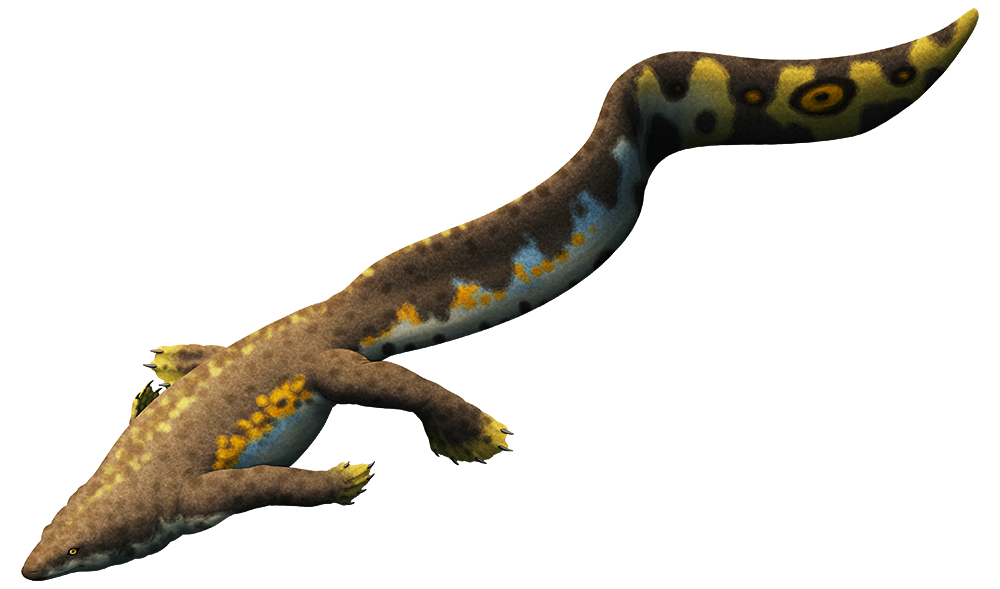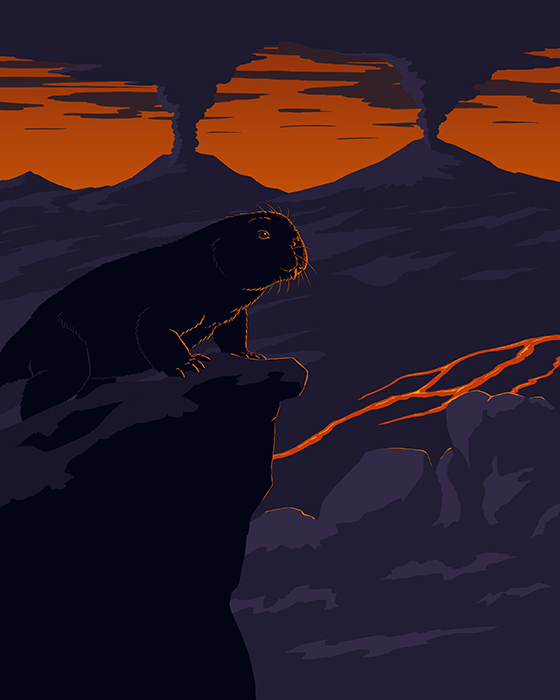The Permian-Triassic extinction 252 million years ago was the most severe mass extinction in Earth’s history, so incredibly devastating that it’s been nicknamed the “Great Dying” – but there were still some animals that somehow just… didn’t seem to really notice it at all.
And one of these surprisingly resilient species was Hovasaurus boulei.
It was part of a group known as the tangasaurids, a fairly early evolutionary branch of diapsid reptiles from Madagascar and East Africa that originated sometime in the mid-Permian, just before the common ancestor of modern lizards and archosaurs.
Hovasaurus lived in Madagascar both just before and for some time after the Great Dying, dating to around 252-247 million years ago. Growing up to about 90cm long (~3′), it was one of the largest tangasaurids and was also highly specialized for aquatic life in freshwater rivers, with an eel-like tail twice the length of the rest of its body and heavy thickened ribs.
Hundreds of fossils have been found representing life stages from hatchling to adult, and juvenile Hovasaurus actually seem to have been almost fully aquatic – they had proportionally shorter limbs and may have behaved similarly to modern sea turtles, crawling into the water shortly after hatching and only returning to land as adults once they had longer better-developed legs.
Many fossils also preserve clusters of pebbles in their abdominal cavities, which are thought to have been used as extra ballast to help weigh them down in the water when hunting small fish and invertebrates.
It’s not entirely clear why these odd little aquatic reptiles were apparently unaffected by the Great Dying. Perhaps, much like the many freshwater species that survived though the later end-Cretaceous mass extinction, Hovasaurus was simply very good at dealing with sudden changes in its environment and food availability due to the variability of river habitats, and was able to weather though the worst of the extinction without much trouble.
Or maybe it was just one of the lucky ones.


